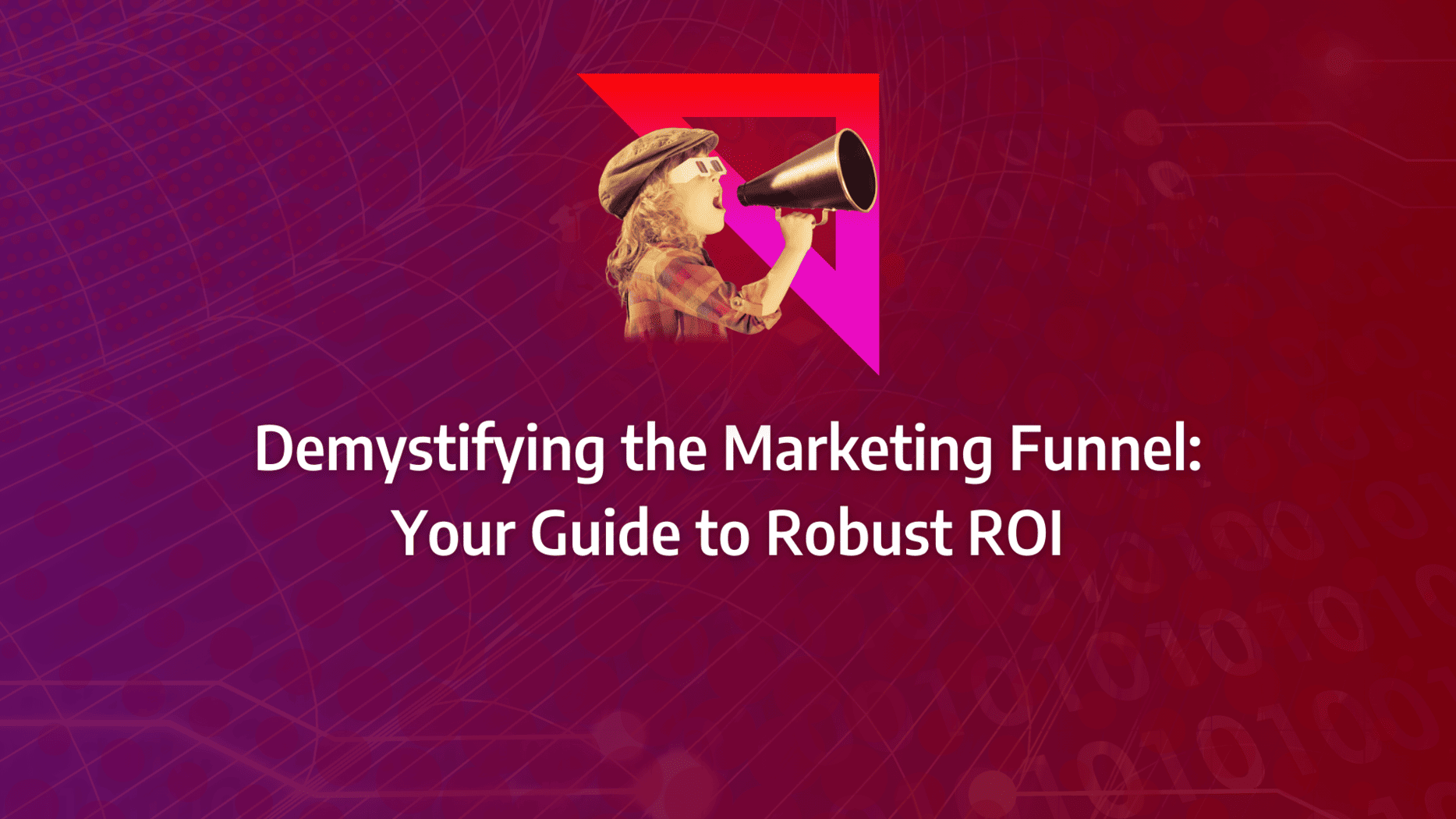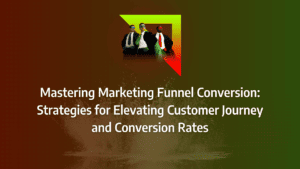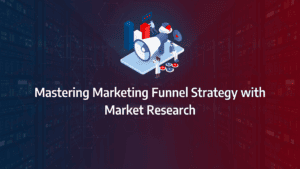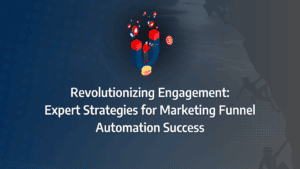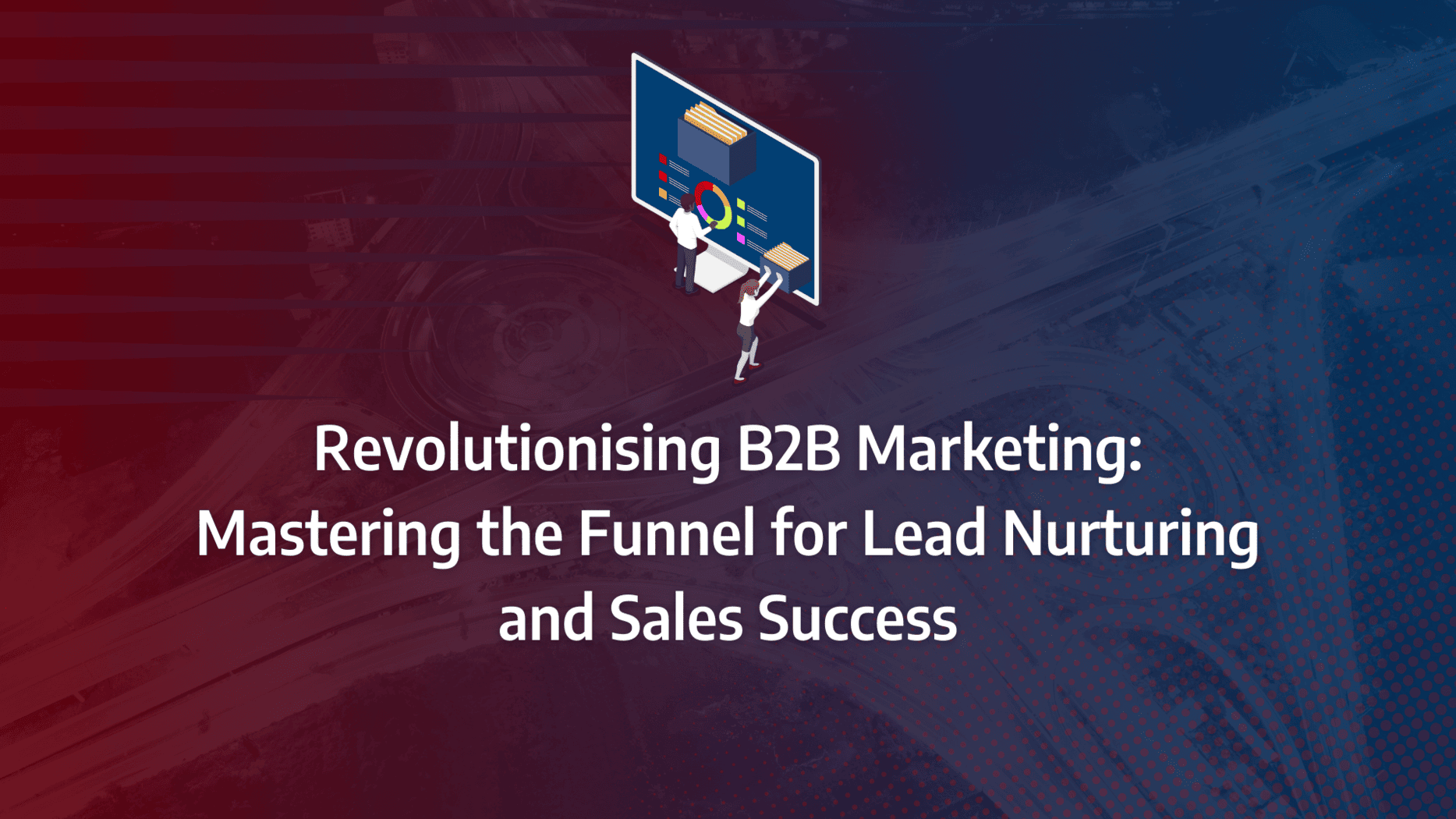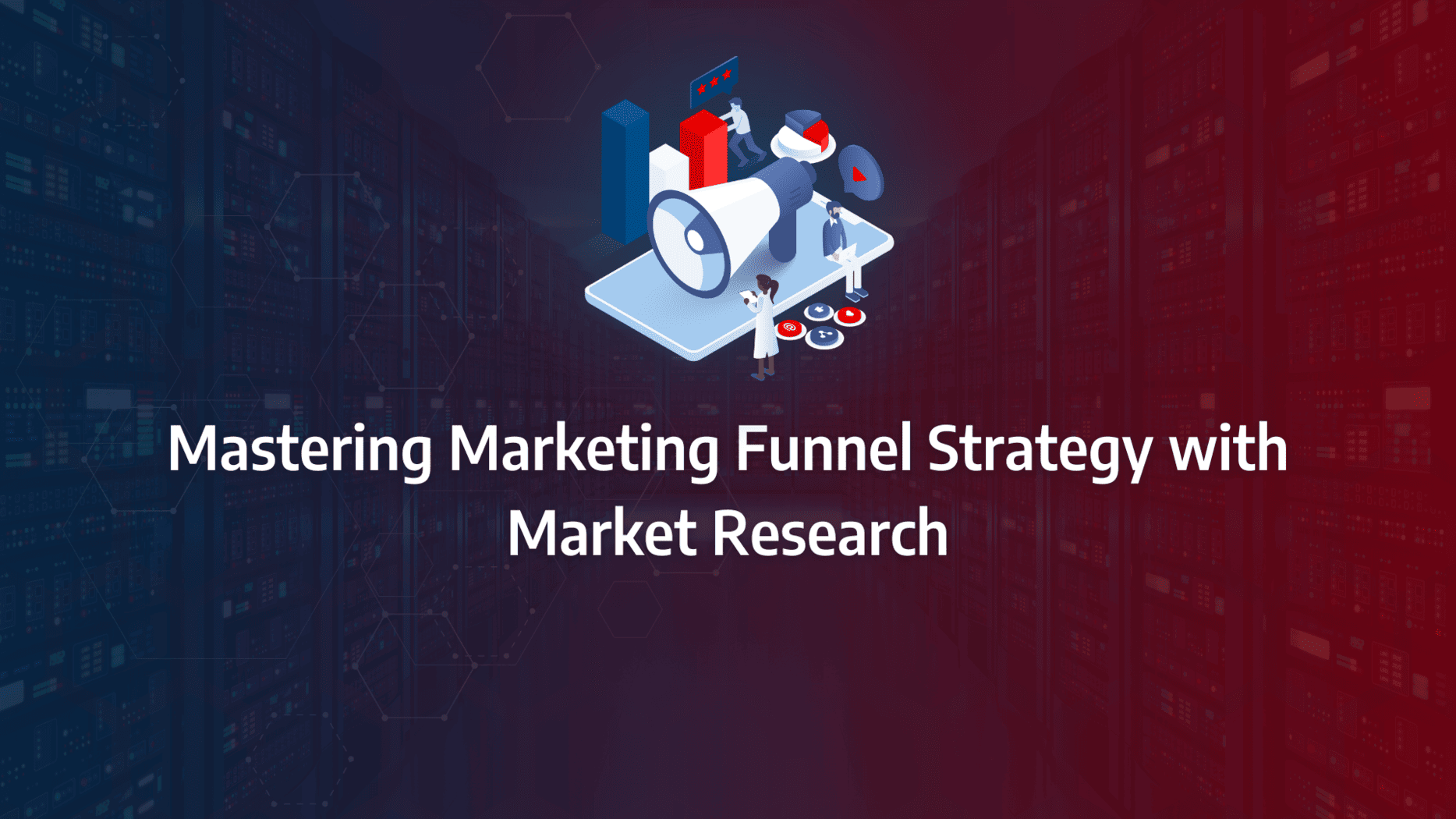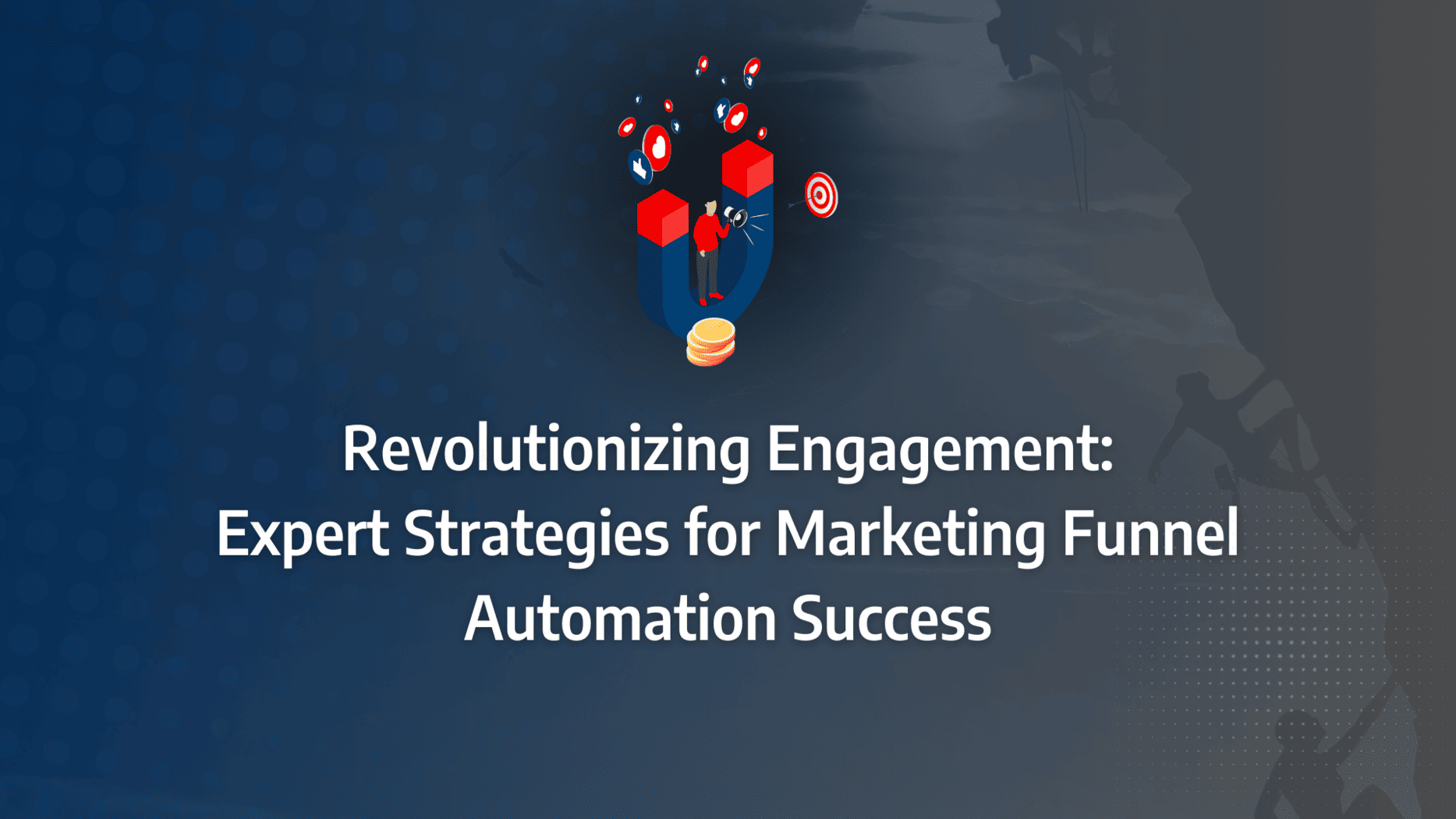Struggling to make sense of your marketing funnel? You’re not alone. Many businesses find themselves pouring resources into marketing efforts, only to see lacklustre returns. But what if there was a way to turn your funnel into a robust engine for growth, driving engagement and conversions at every stage?
In this guide, we’ll demystify the marketing funnel, breaking down its stages and offering actionable strategies to optimise each one. By the end, you’ll have a clear roadmap to not only understanding your funnel but also transforming it into a powerful tool for boosting your ROI.
- Understanding the marketing funnel is crucial for driving customer engagement and improving ROI.
- Optimising each stage of the funnel, from Awareness to Decision, can significantly impact marketing effectiveness.
- Aligning marketing efforts with funnel stages ensures a seamless customer journey, increasing the likelihood of conversion.
- Employing data analytics and A/B testing helps refine your strategies and maximise the efficiency of your marketing funnel.
What are the key stages in a marketing funnel and their objectives?
A marketing funnel is a conceptual model that delineates the virtual journey a customer embarks on from the point of awareness to the moment of purchase. Beginning with the initial awareness of a business, the marketing funnel maps out the various stages of conversion and beyond.
Marketing funnels go by various names, including “lead funnels”, “sales funnels”, “conversion funnels”, and “purchase funnels”, among others. While the definitions of these terms may vary slightly, their primary objective remains the same – to convert leads into actual customers. The primary distinction lies in the specific objectives a brand aims to achieve.
Given the dramatic shifts in customer behaviour precipitated by the COVID-19 pandemic, driving full-funnel marketing has become particularly vital. Over 60 per cent of consumers tried new shopping behaviours in response to economic pressures, store closures, and shifting priorities, with one-third experimenting with different brands. Our data highlights that customers’ expectations of brands are evolving, with many citing a brand’s purpose as a key factor in their purchasing decisions. This influx of new behavioural data offers marketers a unique opportunity to deepen their understanding of customer desires and decision-making processes across the entire funnel. This insight enables the acquisition of new customers while bolstering the loyalty of existing ones.
Goals of a Marketing Funnel
The goals of a marketing funnel can vary depending on the brand’s objectives, such as:
- Selling a product or service (digital or physical).
- Building a contact list.
- Promoting a paid or free webinar.
Why Are Marketing Funnels Important?
Understanding and optimising your marketing funnel is crucial for identifying where you are losing potential customers. A comprehensive understanding of your marketing funnel allows you to influence the progression of visitors through the funnel, ultimately determining whether they convert.
Consider the example of a basic SaaS business funnel:
- Leads visit the site.
- Leads sign up for a trial.
- Leads use the product.
- Leads upgrade to the paid version.

Although customers in this funnel initially do not need to pay to use the product, it is essential to track if upgrading to the paid version poses a roadblock. This monitoring can help in identifying and rectifying potential issues within the funnel.
By following these strategies and continuously analysing your marketing funnel, you can ensure that your marketing efforts are both effective and efficient. This approach not only helps in acquiring new customers but also in maintaining the loyalty of existing ones, thereby driving sustained growth for your business.
What Matters Most?
In our work, a successful marketing funnel isn’t built on a single path—it’s about recognising the diverse needs of different customer segments and building multiple funnels to address them. Clients often discover that when their funnels are aligned with the buyer’s journey, each stage becomes more relevant and trust is naturally established, leading to higher conversions. Typically, personalisation, especially when driven by CRM and behavioural data, creates stronger lead nurturing. We’ve seen this approach dramatically improve engagement by addressing prospects’ specific needs at every touchpoint within the funnel.Get In Touch
Types of Businesses That Benefit Most from a Marketing Funnel
A well-crafted marketing funnel is an invaluable tool for a wide array of businesses, enabling them to transform leads into loyal customers. Below, we explore various types of businesses that can significantly benefit from implementing robust marketing funnel strategies and how they can do so effectively.
Local Businesses
Local businesses, such as wedding planning services, can greatly benefit from a comprehensive marketing funnel strategy.
- Top of the Funnel: At the top of the marketing funnel, the focus is on generating traffic to a dedicated landing page, often through targeted Facebook ads. This stage is crucial for capturing the initial interest of potential clients.
- Middle of the Funnel: Once visitors land on the page, they can be converted into leads by offering valuable content, such as a downloadable wedding preparation checklist. These leads are then nurtured through an email sequence that provides tips and ideas for a stress-free wedding. This consistent communication helps to build trust and keep the business top-of-mind.
- Bottom of the Funnel: In the final stage, the business presents an offer for their wedding planning services, making it easy for customers to make a purchase directly from the website or reach out via email. This seamless transition from lead generation to conversion exemplifies an effective marketing funnel explained.
E-commerce Businesses
E-commerce businesses, particularly those selling niche products like vegan food, also see significant gains from well-structured marketing funnel strategies.
- Top of the Funnel: The initial step involves setting up a landing page with a compelling lead magnet, such as an ebook of vegan recipes. Traffic is driven to this page using social media ads.
- Middle of the Funnel: Leads are then nurtured through a series of autoresponder emails containing cooking tips and additional recipes. This ongoing engagement keeps potential customers interested and engaged with the brand.
- Bottom of the Funnel: Finally, the business directs email subscribers to a sales page to convert them into paying customers. For those who do not convert immediately, follow-up offers and additional social media ads can help close the sale.
Source: Hubspot
Coaching Businesses
Coaching businesses that offer online memberships or courses can leverage marketing funnel strategies to maximise their reach and conversion rates.
- Top of the Funnel: Coaches can start by creating a landing page featuring a valuable lead magnet, such as an ebook on landing clients. Traffic to this page is generated through targeted social media ad campaigns.
- Middle of the Funnel: Once the leads opt-in, they receive the ebook along with a series of drip emails that provide further tips and insights on customer acquisition. This sequence is designed to build authority and trust.
- Bottom of the Funnel: The final stage involves presenting an upsell offer, such as a paid course or membership program. To enhance conversion rates, it’s beneficial to include exit-intent forms and track which users have completed the form and order process. Retargeting efforts should focus on those who have shown interest but not yet committed, using personalised follow-up emails or ads.
What tactics can I use to drive traffic into my funnel?
The marketing funnel plays a pivotal role in transforming leads into paying customers, forming the cornerstone of an effective marketing campaign. Understanding how to drive consumers into your marketing funnel strategy is crucial for maximising conversions.
Awareness
To build a successful marketing funnel, brands must focus on pulling leads into the funnel by raising awareness of the company. Several proven techniques can effectively achieve this:
- PPC Campaigns: Pay-per-click (PPC) campaigns target consumers who are actively searching for solutions. A well-executed PPC campaign can be a brilliant source of qualified traffic, funnelling interested prospects directly into your marketing funnel.
- Social Media: Social media platforms allow brands to identify users predisposed to be interested in their products or services. It is an excellent way for brands to reach out to potential targets, driving them into the marketing funnel explained by their engagement with relevant content.
- Organic Search: Optimising for search engines ensures that your products or services appear to users actively looking for solutions to their problems. High search engine rankings are vital for pulling organic traffic into your marketing funnel strategy.
- Influencer Marketing: Influencers have a unique ability to introduce your brand to a wider audience. Their storytelling skills and trusted voices can effectively communicate your brand’s features and benefits, enhancing consumer awareness and drawing them into the funnel.
Interest
Once prospects are aware of your brand and enter the funnel, it is essential to build and maintain their interest. A content-rich website serves as the best tool for this phase, showcasing your expertise and addressing customer queries and needs.
- Content Marketing: Creating valuable online content, such as blog posts, articles, videos, and infographics, keeps consumers engaged and informed. Effective content marketing tactics are essential components of successful marketing funnel strategies.
- Datasheets: Providing detailed information, such as cost-in-use, energy usage, and product dimensions, helps leads understand your offerings better. These datasheets serve as vital touchpoints in nurturing interest.
- Checklists: Offering practical checklists provides leads with step-by-step guidance on how to accomplish specific tasks, enhancing their perception of your brand’s utility.
- Webinars: Webinars combine visual and audio elements to deliver digestible information. They are excellent for outlining new products or services and demonstrating why your brand stands out, further nurturing leads through the funnel.
Desire
At this stage, it is crucial to transform interest into desire for your product or service. Several tactics can effectively generate this desire:
- Email Autoresponder: An email drip campaign can foster a strong relationship with potential customers. Highlighting specific problems your brand solves and how your solutions differ from the competition can tip the scales in your favour.
- Comparison Blogs: Blogs that compare your brand to competitors can help leads decide which offers better features and benefits, making your product or service more desirable.
- Case Studies: Showcasing real-life examples of customer success stories can significantly enhance desire. Demonstrating how your products or services have improved customers’ lives provides powerful social proof.
Action
The action phase is the most critical part of the marketing funnel. While only a small percentage of leads reach this stage, an optimised marketing strategy can significantly increase this number.
To maximise the number of leads converting into customers, ensure your marketing funnel strategies are continually refined and adapted based on data insights and performance metrics. By doing so, you create a more efficient funnel that drives sustainable business growth.
Our Tactical Recommendations
We typically see the most effective tactics for optimising your funnel often lie in remarketing and retargeting. Clients often discover that keeping lost leads engaged through targeted ads can recover substantial opportunities. Testing every element of the funnel, from ads to landing pages, is critical, and we’ve seen small adjustments yield significant improvements in conversions. Additionally, middle-of-the-funnel content, such as case studies and testimonials, typically keeps leads engaged, helping them make better decisions at the crucial points of consideration and conversion.Get In Touch
How do I use heatmaps, surveys & recordings to optimise my marketing funnel?
Optimising your marketing funnel strategy requires a balanced approach that incorporates both quantitative data (numerical insights) and qualitative data (user experiences and sentiments). Relying solely on one type of data can lead to an incomplete understanding of your funnel’s performance. Here are four essential tools that integrate these data types, enhancing conversions across your entire marketing funnel.
Heatmaps
Heatmaps visually represent user interactions on your webpage, highlighting popular (red) and unpopular (blue) areas. This tool helps you understand how visitors navigate your site, which elements attract the most attention, and which areas may need adjustments to keep users engaged.
Using this insight, you can make targeted changes to increase user engagement and conversion rates. Abandon less effective strategies or A/B test new ideas to find the best solutions.
Example for the Top of the Funnel (TOFU): Implement heatmaps on TOFU strategy pages like blogs and landing pages. This allows you to see how visitors interact with these pages and identify which content successfully draws them deeper into the funnel.
Source: KhrisDigital
Session Recordings
Session recordings capture real-time visitor actions such as mouse movements, clicks, and scrolling. These recordings provide a detailed view of how users experience your website, helping to identify any issues or pain points that cause drop-offs.
These insights can highlight areas where the user experience can be improved, such as fixing broken elements, resolving bugs, or simplifying complex designs.
Example for the Middle of the Funnel (MOFU): Utilise session recordings to analyse user behaviour on MOFU strategy pages, including category pages, product descriptions, guides, how-tos, case studies, and comparison pages. This can reveal barriers to conversion that need to be addressed.
Surveys
Surveys are a direct method of gathering feedback from your website visitors. By understanding what prevents conversions or what users appreciate about your site, you can make informed decisions to improve the customer journey.
Surveys at various funnel stages can provide insights into user expectations and satisfaction, guiding you to make enhancements that increase conversion rates.
Example for the Bottom of the Funnel (BOFU): Deploy on-site surveys on BOFU strategy pages like demo pages, category pages, product pages, and checkout pages. This helps identify final conversion barriers and gather feedback to fine-tune the last stages of your funnel.
By incorporating these tools into your marketing funnel strategies, you can achieve a more comprehensive and effective approach to boosting conversions. Each tool offers unique insights that, when combined, provide a powerful means to optimise your entire marketing funnel explained, driving sustainable growth and success for your business.
